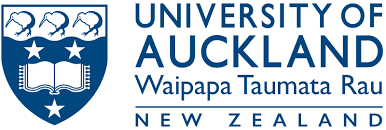WHY
Fresh and coastal water quality impacts the lives of every New Zealander. Drinking water sources, aquaculture and water used for recreational activities and cultural practices are under threat from contamination. The quality of many surface waters is poor and/or declining. However, monitoring the health of our freshwater bodies and near-shore environment is challenged by their remoteness and difficulty in gaining access.
Many of Aotearoa-New Zealand’s water bodies are considered taonga by tangata whenua and as a country there is a duty of kaitiakitanga to protect the health and biodiversity of the nation’s water for future generations.
Achieving fit-for-purpose monitoring of the water quality of our lakes and near-shore environment requires new tools that are not labour intensive, provide frequent and spatially comprehensive monitoring, and that generate the diagnostics that water quality practitioners require in their day-to-day decision-making. These requirements could potentially be met through monitoring by satellites. However, because existing satellite data products are optimised to provide global coverage, their revisit periods and resolution are insufficient for our water quality monitoring needs. Most missions are large-scale, providing data to many diverse users and typically do not provide specialist ranges needed for water quality monitoring.
WHAT
HOW
Our demonstration mission comprises an imaging system on a single agile satellite platform hosting a deployable multispectral imager to detect algal and sedimentary indicators and a secondary thermal camera to detect water surface temperature. The imager will capture high-resolution imagery over small geographic targets to address specific end-user needs at low cost and in a timely fashion.
Alongside the technical development, the programme will identify spectral bands from which other important water quality parameters can be derived for use in a future constellation of such satellites. This will establish a framework for a data fusion and analytics system for integration with existing modelling and reporting systems.
To enable a constellation of such satellites, the proposed pilot mission is based on a 12U CubeSat form factor incorporating a novel deployable Optical Front End to provide a long focal length within a small launch volume. The primary payload is a multispectral imager with channels targeted at optical water quality indicators in the
400-800nm range delivering 10m resolution. Capabilities will include in-orbit detection of cloud cover and target prioritisation. The deployable design will allow more satellites to be launched on a single rocket and therefore will result in lower deployment cost of a constellation, whilst intelligent operations will enable more efficient use of satellite time.
Payload Development
Ground segment and operations
Data Applications
Our Partners



25
Jan
Clear Shores data-user meeting 1-4pm.
In this online meeting, we will discuss data-users’ design requirements for Clear Shores. If you are a water quality monitoring practitioner and would like to join, or learn more, please email annabel@bodekerscientific.com for more information. We’re keen to hear from you, especially during these early stages when you can help shape the programme.